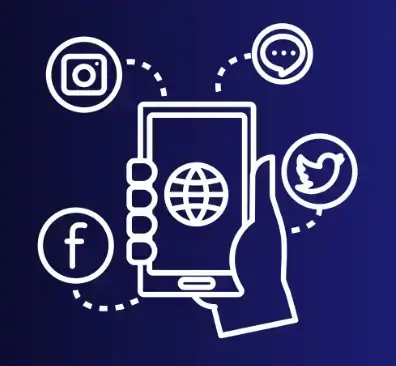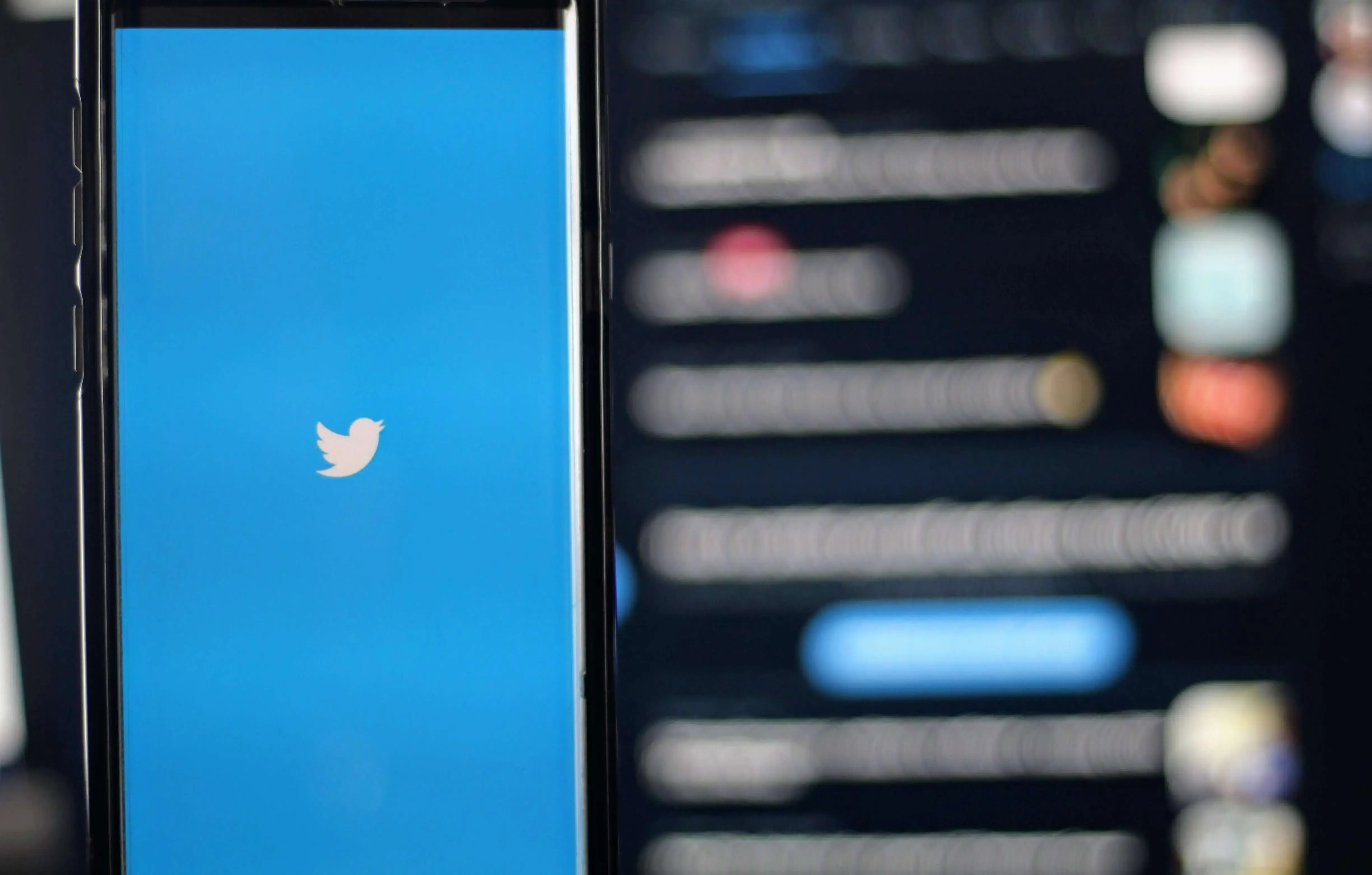Monitoring Your Social Media at Scale
Master the art of monitoring social media at an extensive scale with Synup’s insightful resources and strategic guidance.
How do you win on social media? Be customer-obsessed. Seasoned social media managers know that engaging with and monitoring your audience gets you more traction than a perfect post ever will, which is why monitoring your social media at scale is essential for building a strong brand presence online.
In fact, 50% of buyers in 2023 said they check a brand's social media presence before making a purchase. You need to make an impact with content that’s guaranteed to win over your audience. Because customers don’t just want to see your business, they want to interact with your business. From questions and comments to detailed feedback, customers love leaving comments and interacting with brands online. And 79% of online shoppers expect brands to respond to their queries on social media within a day. That’s a lot of pressure, especially when you’re trying to juggle so many responsibilities for your brand’s social media page.

By effectively monitoring your socials, you can stay on the pulse of your audience, adapting to their needs before your competitors and claiming more market share (and smashing your KPIs in the process). As your audience grows, you’ll need a strong system in place to support your efforts and give you valuable insights. Enter: social media monitoring!
After all, managing your brand’s presence across multiple platforms and monitoring every interaction, comment, or story mention can be a daunting task - especially as your brand (and customer base) expands. By implementing effective social media listening and monitoring practices from the get-go, you can stay informed, make data-driven decisions, and make headway in optimizing your brand’s social media presence!
Why add something else to your to-do list? It’s simple: you can’t know if your social media strategy is working without it.
At its core, social media monitoring helps you measure the effectiveness of your posts and track your influence. From hashtag and competitor tracking to customer engagement and brand mentions, you need a strategy to see how your brand (and posts) comes off online. If your social media strategy is a boat, social monitoring is the rudder. Without it, you’ll be lost at sea!
Read on to learn anything and everything about social media monitoring. From understanding the concept and importance of monitoring to finding the right tool and strategy for your brand, we’ve got your back. We’ll delve into all the benefits, like:
- Reputation management
- Customer insights
- Competitor analysis
- Audience engagement
- Market research
- And more!
Plus, we’ll guide you through building an effective strategy that will serve your brand for years to come. Let’s jump into the best way to build your social media monitoring strategy, starting with why it’s important, how to choose the right tool for your goals, leveraging social listening for reputation management and market research, and much more.

Whether you’re an old pro or just starting to build your social media expertise, we’ve got your back! By staying on top of conversations, tracking brand mentions, and leveraging real-time insights, you can manage your brand's reputation, enhance customer satisfaction, and drive meaningful engagement with ease. Let’s get started!
Understanding social media monitoring
Social media can make or break your business. From restaurants going viral on TikTok because of foodies’ posts to casual discussions of the best brands taking place across platforms, staying on the pulse of your industry is easier said than done. Social media’s dynamic and influential nature makes it perfect for small businesses and large brands alike to leverage and interact with their customer base.
But, beyond metrics, how do you tell how you’re actually doing?
Social media monitoring!
Essentially, that entails systematically tracking and analyzing online conversations, mentions, and engagements related to your brand, industry, or specific topics of interest. To build an effective monitoring strategy, you should be keeping tabs on all platforms. Whether it’s Facebook, Twitter, Instagram, LinkedIn, YouTube, or TikTok, socials are the key to gaining real-time insights into customer sentiments, emerging trends, and relevant discussions.
And when you put in the time and effort to properly create and maintain a monitoring strategy, you’ll effectively:
- Manage your brand reputation: Keep an ear to the ground and see what customers are saying about your brand. By tracking brand mentions, sentiment, and customer feedback, you can troubleshoot problems, address concerns, and build a 5-star reputation.
- Get customer insights: Monitoring social media conversations gives you a direct window into the minds of your customers. By analyzing their discussions, preferences, and pain points, you can gain valuable insights to improve products, services, and customer experiences.
- Spy on your competitors: Social media monitoring enables you to monitor your competitors' activities, campaigns, and customer interactions. By understanding their strategies and audience perceptions, you can identify opportunities, benchmark your performance, and make informed decisions to stay ahead in the market.
- Manage crises: In times of crises or reputation-damaging events, social media monitoring becomes vital. By promptly detecting negative sentiments, addressing issues, and engaging with affected stakeholders, you can mitigate potential damage and maintain control over the narrative.
- Conduct market research: Social media conversations offer a rich source of market research data. By monitoring discussions related to industry trends, customer needs, and emerging topics, you can gain actionable insights to drive product development, innovation, and marketing strategies.

To ensure you’re not grinding away for nothing, it’s essential to establish key metrics and key performance indicators (KPIs) to track. Here are some common KPIs:
- Volume: Tracking the number of brand mentions and social media conversations relating to your brand lets you see your brand’s buzz and visibility.
- Sentiment analysis: When people talk about your brand, what are they saying (positive, negative, or neutral)? This can help you see what customers think of your brand - and identify areas to improve!
- Reach and engagement: Metrics such as likes, shares, comments, and retweets help measure how much your audience is actually interacting with your content.
- Share of voice: You vs. the competition: who is getting talked about more? Comparing your brand's online presence and mentions with that of your competitors lets you see your share of voice in your industry.
- Influencer engagement: Customers trust people over brands. Track which influencers are mentioning your brand with regularity to identify your brand champions!
By monitoring these metrics and KPIs, you can measure the impact of your social media efforts, track progress over time, and make data-driven decisions to optimize your strategies!
To truly tap into the power of social media, you need to understand it from the inside out. That’s why listening to your audience, analyzing conversations, and measuring key metrics unlocks a world of valuable insights. Armed with what you learn from social listening, you can build your brand, engage with customers, and crush the competition.
And, for most brands, that means investing in the right tool.
Choosing the right social media monitoring tool
If you’re serious about growing your brand’s socials, you need a powerful toolkit. Let’s look beyond rudimentary scheduling tools and platform-given analytics, to see where the real growth happens.
Social media is work, but it doesn’t have to be grueling. Building a workflow that works for you (and your brand) starts with a strong foundation. Here are some factors to keep in mind when choosing a tool.

Types of social media monitoring tools:
Social media listening platforms: Get comprehensive monitoring capabilities across channels and analyze data on your brand mentions, customer sentiment, and conversations.
Social media analytics tools: If you’re looking for advanced data analysis and in-depth insights into engagement metrics, audience demographics, and campaign performance, this is the tool for you!
Social media management tools: An integrated solution that combines monitoring, scheduling, publishing, and analytics features.
Features and functionality:
Start with the right data: Make sure the tool you choose covers all the social media platforms your brand uses. From Facebook and Instagram to Youtube and TikTok, you need to get a clear picture of your brand across platforms!
See the 411 with real-time monitoring: Most tools use real-time monitoring to track brand mentions, conversations, and trending topics as they happen. This ensures that you can see what’s happening that second, so you can see conversations and engagement as they occur.
Do a vibe check with sentiment analysis: Need a vibe check? Try a tool that includes sentiment analysis. That way, you can understand how your audience really feels about your brand. And it should go beyond positive/negative. Make sure your tool of choice gets into the nitty-gritty! After all, it’s more helpful to know that customers “love the new styles” you launched vs just liking your brand.

Get the right data with customization and filters: A solid tool will help you customize what you monitor, set up filters, and refine results so you can focus on relevant data. In other words, create helpful customizations to get you the exact data you need to measure your KPIs!
See your results with reporting and analytics: Some tools are still lacking in reporting features. No matter how you’re performing, it’s essential to effectively track and analyze your results. Find exactly what you want, from customizable dashboards and data visualization to exportable reports.
Integrate, integrate, integrate: It sucks to find a great tool, only to realize it doesn’t integrate with your marketing stack… Confirm with a brand rep that their tool integrates with your CRM (and any other tool you use). Some platforms even offer custom integration solutions - so don’t be afraid to make a request before you write off an otherwise-perfect tool. You won’t regret taking the time to streamline your workflow!
Ease of use:
Smooth user interface: See a demo or start a free trial of the monitoring platform you want to try. Is the interface intuitive, or do you need hand-holding to get the hang of it? For large teams in particular, it’s essential to find a tool that doesn’t have a steep learning curve. Don’t let a clunky user experience jam your productivity!
Ready, set, GO!: How long will it take to set up your account? A long onboarding or setup process can seriously slow down you and your team - so make sure you can get started quickly.
Somebody to lean on: Some platforms seem great, but operate with a lean and mean team. This can be great - smaller teams can be some of the most dedicated. But some platforms troubleshoot problems with chatbots or have long wait times to reach an actual support person. Look into a company’s G2 reviews to see if they go the extra mile for their users.
Taking off the training wheels: Many tools offer great training resources, documentation, and customer support to help you get started. The more resources they have, the better you’ll be able to fully understand and utilize the product to the fullest!
Pricing and scalability:
Take out your calculator…: Some tools might not be in your price range. When you start your search, consider your budget and evaluate the tool’s pricing structure. Some tools have sliding costs based on features, usage, or the number of users, which can be helpful for smaller brands looking to grow!
Does it scale?: If you’re just dipping your toe into social media monitoring, you might be starting small. Find a tool that will accommodate your needs now and in the future.
No matter your needs, there’s a tool for you. Before deciding on which platform to use for your brand, you need to ensure it’s the right fit for your needs (and budget)! Don’t be afraid to shop around and talk to sales reps to get a clear picture of how to best utilize the tool. Demo a few products and sign up for ALL the free trials. It’s hard to see what works for your brand without seeing them in practice. The more work you do upfront, the more likely you are to find a tool that makes life a lot easier for you.

A look at popular social media monitoring tools
Remember, the right tool should align with your goals, give you the features you need, fit in your budget, and offer excellent support for your strategy. Here’s a bit about some popular tools:
Synup Social:
Features: Synup Social is a social media management platform that offers publishing, scheduling, and analytics capabilities. It supports all of the major social media platforms and provides advanced engagement analytics.
Results: Users report increased efficiency in social media management, improved collaboration, and the ability to track and measure KPIs with the advanced analytics.
Hootsuite:
Features: Hootsuite is a comprehensive social media management platform that provides monitoring, publishing, scheduling, and analytics capabilities. It provides advanced monitoring features like keyword tracking, sentiment analysis, and real-time alerts.
Results: With Hootsuite, users effectively manage social media accounts, improve team collaboration, and track and respond to brand mentions and customer inquiries in a timely manner.
Sprout Social:
Features: Sprout Social is a social media management and monitoring tool that offers features like social media listening, publishing, engagement, and analytics. It provides sentiment analysis, trend analysis, and customizable reporting options.
Results: Users have experienced enhanced social media engagement, improved customer satisfaction through timely responses, and gained actionable insights into their audience's preferences and interests.
Brandwatch:
Features: Brandwatch is a social media listening and analytics platform. It offers real-time monitoring, sentiment analysis, topic clustering, and advanced data visualization options. It also provides competitive intelligence and influencer identification features, making it perfect for brands seeking collaboration.
Results: Users get a deeper understanding of their brand's reputation and sentiment, identify emerging trends and consumer insights, and leverage competitive analysis to refine their marketing strategies.
Mention:
Features: Mention is a social media monitoring tool that helps track brand mentions, monitor competitors, and gather market insights. It offers real-time alerts, sentiment analysis, social media listening across various platforms, and customizable reports.
Results: Social media managers use Mention to monitor brand reputation, proactively address customer issues, identify and engage with influencers, and gain valuable insights into industry trends and market sentiments.
Emplifi:
Features: Emplifi is an all-in-one social media marketing platform that includes monitoring, analytics, content management, and advertising features. It provides comprehensive social media insights, competitive benchmarking, audience analysis, and influencer identification.
Results: Users have seen improvements in social media campaign performance, optimized content strategies based on audience analysis, gained competitive intelligence, and achieved higher engagement and conversion rates.

Strategies for effective social media listening
Social media listening entails monitoring keywords, topics, conversations, and mentions. Basically, keeping your ear to the ground so you know when your brand is being talked about! Implementing an impactful social strategy based on your findings starts with effective monitoring.
Here are the ingredients for an effective strategy:
- Set clear goals: What do you want to achieve in monitoring your social media? Some examples include: improving customer satisfaction, tracking brand reputation, or identifying market trends. Establish key performance indicators (KPIs) and to track your progress and evaluate the effectiveness of your monitoring efforts.
- What’s the (key)word?: Define relevant keywords and topics to monitor. These should be relevant to your brand, industry, or products/services.
- Track brand mentions: When are people mentioning your brand name, product names, and associated hashtags? Tracking these helps you stay informed about conversations involving your brand. Once you have tracking in place, be sure to respond promptly and appropriately to questions, comments, and feedback to build positive relationships and demonstrate your commitment to customer satisfaction!
- Vibe check: Sentiment analysis tools help you gauge what your audience is feeling about your brand (positive, negative, or neutral). You can understand customer feedback by paying close attention to what your customers say, whether it’s positive or negative, to identify areas of improvement, address concerns, and leverage positive experiences.
- Build your fan club: Identify influencers and brand advocates who love your brand. Finding and collaborating with influential people or organizations in your industry amplifies your brand's reach. Be sure to nurture these relationships so you can leverage their influence and promote your brand.
With these in place, you can start to execute an effective strategy that will give you insight into customers’ opinions of your brand!
The importance of real-time tracking and engagement
Ever get a reply from a brand days after you commented on their post? Don’t let that be you - track engagement in real-time so nothing slips through the cracks.

Staying on top of conversations with real-time monitoring also prevents you from getting a backlog of comments or mentions to respond to. That way, you can quickly identify and respond to brand mentions, customer comments or questions, and more. After all, the best companies are customer-obsessed. Build a strong reputation while nurturing relationships with your customers by always engaging in what they post or ask! And if things take a turn for the worse, you can swiftly address any negative sentiment, misinformation, or potential crisis situations before they escalate. You wouldn’t want to go viral for the wrong reasons!
To monitor mentions and engagement in real-time:
- Build a solid toolkit: Choose a social media monitoring tool that offers real-time alerts, notifications, and customizable dashboards to track brand mentions and conversations. Be sure to monitor relevant hashtags so you can identify trending topics, join conversations, and gain insights into industry trends!
- Don’t leave your customers on read: Be responsive! Actively engaging with your audience in real-time shows them that you care about engaging with them - it’s not just another to-do list item.
- Give your hot takes: Jump in on trending topics and discussions in your niche to showcase your brand's expertise, gain visibility, and build thought leadership. However much you want to set and forget your content calendar, the real opportunities for engagement and growth happen in real-time. Don’t miss out!
By implementing effective social media listening strategies and embracing real-time tracking, you can unlock valuable insights, proactively manage your brand's online presence, and build meaningful engagement with your audience. Real-time engagement helps to build a strong foundation for a stellar online reputation!

Managing your reputation on social media
After putting all this time and effort into your brand’s social media presence, you’d better be leaving a positive impression on your followers! Of course, that’s easier said than done. Here’s your to-do list to make sure your online reputation is in check:
- Proactively monitor your brand: Like we said above, it’s essential to monitor brand mentions, reviews, and customer sentiment. That way, you can address any negative feedback or complaints before they escalate! Use the same approach for any customer interactions; you want to be helpful, after all. Respond to customer inquiries, concerns, and feedback in a timely manner to show your audience your commitment to customer satisfaction.
- Respond to customers with empathy: While there’s a time and place to show your brand’s personality, dealing with angry customers may not be it. Handle negative feedback and complaints with professionalism and empathy, and try to find a solution. Build your best advocates by turning a bad situation into a positive one! Negative feedback can be an opportunity to show customers your devotion and willingness to go the extra mile.
- In case of a crisis, have a plan: If you’re going viral for the wrong reasons, take a deep breath and rely on your crisis management plan. Define roles and responsibilities, establish communication protocols, and outline the steps you may need to take. Often, handling crises quickly and transparently helps resolve them without too much of a blow to your company’s rep.
While social media is the perfect place to build customer relationships, it can easily turn into a make-or-break situation. Effectively leveraging social media monitoring for managing your brand's online reputation is key. Put some effort into managing your relationships and reputation and see how your engagement and customer sentiment goes through the roof!

Enhancing brand reputation with social media monitoring
Let’s go beyond “managing.” You want to grow, don’t you? Then let’s jump in - building a positive brand reputation takes more than responding to problems as they arise. To build a positive brand image, you need to be proactive! Here’s how:
- Monitor brand sentiment: Remember how we just talked about monitoring your brand online? That’s the basis of this strategy, too. Identify trends in customer sentiment and take proactive measures to address any negativity. Jump on problems as they arise, and take the time to clarify anything that might trip up your audience! Make your brand known for its flexibility, empathy, and humbleness, and negative feedback won’t be so catastrophic.
- Show your fans some love: You shouldn’t just be troubleshooting problems - make sure to respond to your fans, too! Engage with users who share great experiences or mention your brand. You can highlight their content (or repurpose it on your feed) to show your appreciation and grow your community. People love to be noticed, after all!
- Hype up your brand advocates: How can you get more user-generated content? Show your fans some love! Start campaigns to encourage brand advocacy (for example, Apple’s #ShotoniPhone campaign) and prompt customers to share their images or experiences. The more you engage with and encourage your fans, the more they’ll promote you.
- Leverage your brand love: If you get positive feedback, showcase it! Highlight positive customer feedback, testimonials, and reviews across your social media channels. Sharing success stories and positive experiences helps to build trust, credibility, and social proof for your brand.
Social media monitoring helps you track your brand’s biggest fans and come up with innovative campaigns to keep the love flowing! Leveraging your audience is the best way to grow your reach and show potential customers that your business is tried and true.
Leveraging social media monitoring for market research
Want insights into who your customers really are and what they really want? Social media monitoring can help with that. Social media is the perfect place to test and experiment, making it the perfect place to conduct market research.
Get insights into your customers that will serve your marketing strategy for years to come:
- Track industry keywords: See what’s hot in your industry to your industry to identify emerging topics, consumer preferences, and market trends. That way, you can stay on the pulse and get a sense of what’s trending in your niche.
- Analyze competitor activity: The first place to go when doing industry research? Your competitors’ profiles. Keep a close eye on your competitors' social media presence to gain insights into their strategies, product launches, and customer responses. Look out for discussions and feedback related to your competitors' products or services to gain insights into their strengths, weaknesses, and customer perceptions. This can give you an “in” when you go head-to-head!
- Mind the (market) gap: What are your competitors overlooking? Analyze customer feedback and pain points on your competitors’ pages to identify opportunities for product or service innovations for your brand. What you find can guide your product development and innovation.
- Meet your customers’ needs: Social media monitoring provides valuable insights into customer preferences, expectations, and desires, helping you tailor your product to their needs.
- Get feedback on your next big thing: Have something in the works? Leverage your audience to share and gather feedback on product prototypes through social media channels to validate ideas, refine features, and improve overall product offerings.

Once you get into it, social media is the perfect place to conduct market research. Turnaround time is quick, and anything you ask about will soon be buried (or disappear if you use stories). Leveraging your customer insights to improve your brand and product offerings is a great way to use your social presence.
Competitor analysis through social media monitoring
The best source for industry info? Your competitors’ social media pages. By monitoring your competitors’ activity and campaigns, you can get a sense of what you’re up against (and even get ideas of your own). Monitoring your competitors' social media activities provides insights into their marketing strategies, content performance, and audience engagement, helping you identify areas for improvement - so you can stay ahead in the market.
And by comparing your social media metrics with those of your competitors, you can assess your brand's strengths, weaknesses, and areas where you can come out on top.
Once you find the perfect way to beat the competition, focus on:
- Monitoring content performance: Analyze your competitors' social media content to identify high-performing posts, engagement strategies, and content themes that drive the most engagement
- Tracking campaign effectiveness: Monitor your competitors' campaigns to evaluate their success, audience response, and overall impact. Use this to direct your own campaign creation!
- Analyzing engagement metrics: Compare your brand's social media engagement metrics, such as likes, shares, comments, and follower growth, with those of your competitors to see how you measure up
- Identifying gaps and opportunities: Where are your competitors missing the mark? Identify areas where your competitors are failing (or excelling) and leverage those insights to enhance your strategy
Skyrocket your brand to #1 by keeping an eye on the competition. After all, operating in a silo won’t help you gain market share or create products (or posts) that are attractive to your consumer base.

Tips and best practices
So, that was a lot. Here’s a bite-sized strategy for your social media monitoring endeavors:
- Set up effective alerts and notifications: Once you define relevant keywords and phrases, use these keywords to set up alerts and notifications for real-time monitoring. Refine your alerts to ensure you receive alerts for the most relevant conversations and mentions. Don’t be afraid of experimenting with different combinations of keywords, filters, and platforms to fine-tune your alerts and find what works for you.
- Look beyond numbers for real insights: When analyzing social media data, focus on the context and sentiment of conversations, not just the quantitative metrics! Understanding the underlying meaning and implications of the data helps you make a more informed decision.
- Integrate social media monitoring into your overall strategy: Your strategy should align with your overall social media strategy and marketing strategy. Use the insights gained from monitoring to inform your content creation, campaign strategies, and customer engagement initiatives. Collaborate across teams to get the best leverage from your findings. Then, you can get a more comprehensive understanding of your audience and enhance your decision-making.
- Find a tool to hack your workflow: To streamline social media monitoring, find the right tool and process for your business. From assigning responsibilities and establishing communication channels to leveraging automation, build a workflow that ensures nothing falls through the cracks.
- Collaborate, collaborate, collaborate: Team collaboration is essential; the right tool can help you master it. Use features within your monitoring tools to facilitate communication, share insights, and ensure everyone is on the same page and aligned under common goals!
Bottom line: building a successful monitoring strategy starts with aligning your goals and finding the right tool to reach them. Once you have a strong foundation in place, you can play around with what aspects of social monitoring you want to prioritize or leave out of your strategy. As your brand evolves and grows, this might change. But no matter where your business grows, starting with a strong social media monitoring strategy ensures that you can stay on the pulse of your audience (and your industry)!
Social media monitoring helps you stay on the pulse of your audience - so you can drive future performance
Presence is everything. That’s why staying on top of monitoring your brand presence is a key part of beating the competition, building brand champions, and making data-driven decisions.
From understanding the fundamentals of social media monitoring to choosing the right tools, implementing effective strategies, and leveraging the power of real-time tracking, you now have a solid understanding of how to monitor your social media presence effectively. Congratulations! Now the hard part: actually implementing it.
However daunting it may seem, social media monitoring is worth it. By actively listening to your audience, analyzing conversations, and measuring key metrics, you can unlock valuable insights, enhance your brand reputation, and drive your brand's success on social media.
The ins and outs of social media monitoring will continue to evolve as platforms evolve and trends come and go. But by building a solid foundation and a streamlined workflow, you’ll be able to easily meet the ever-changing needs and preferences of your audience. And at the end of the day, that’s what will drive your success.




